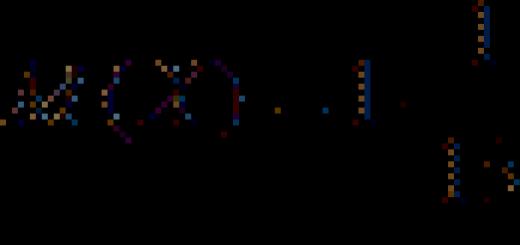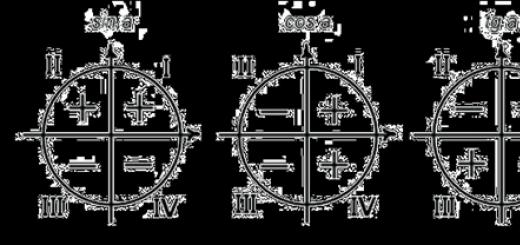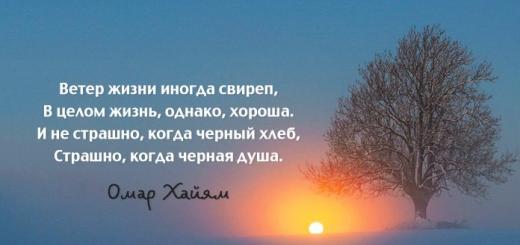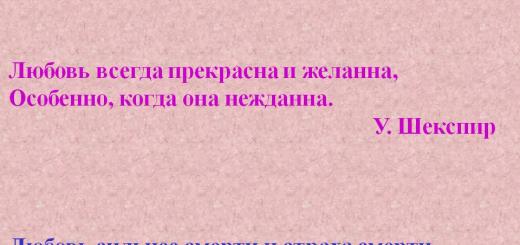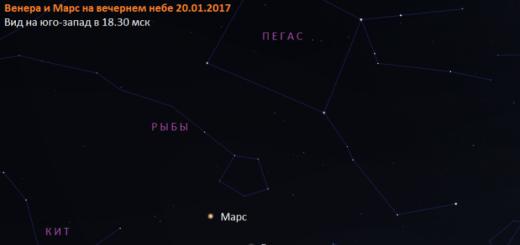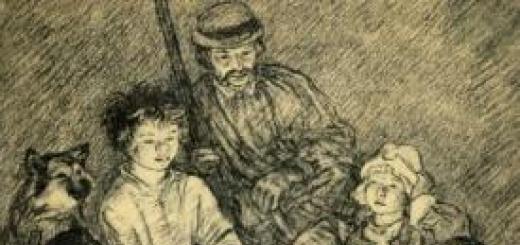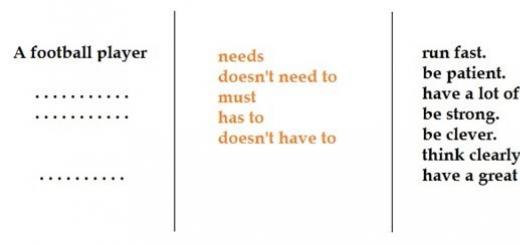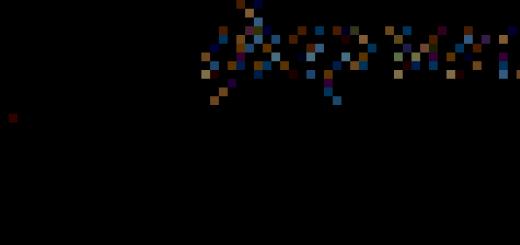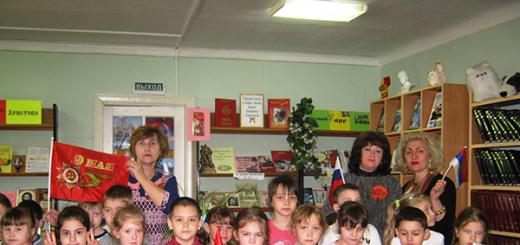Target: improve students’ understanding of the capital of our Motherland, Moscow.
Tasks:
- introduce students to the history of Moscow;
- to form in students an idea of Moscow as the main city of Russia, to cultivate a sense of patriotism and pride in their Motherland;
- develop attention and reading interest of students;
Equipment:
- computer and multimedia projector, screen;
- tape recorder and audio encyclopedia “Moscow Kremlin”;
- exhibition of books about Moscow;
- posters with proverbs;
- views of Moscow;
- model of the Kremlin;
LESSON PROGRESS:
Stage I. First acquaintance with Moscow ( Presentation)
SLIDE 1. “WONDERFUL CITY, ANCIENT CITY...”
A melody about Moscow is playing. Students read the poem: “Hello, Capital!”
Hello, Capital! Hello, Moscow!
Hello, Moscow sky!
These words are in everyone's heart -
No matter how far away he is.
We remember these words from childhood,
And there is nothing more beautiful and simpler
For the city named - the city of MOSCOW,
For the square – RED Square.
There are many other squares in the world,
There are many heroes in the world.
But how many brave people were here,
Perhaps it has never happened anywhere.
Who goes to sea, who flies into space,
Believing the route to be dangerous,
But everyone considers it the beginning of the journey
A walk around RED Square.
Introductory words from the teacher:
– Guys, today we will take a virtual tour of the capital of our RUSSIA, the hero city of Moscow.
Watching a video about Moscow. The words in the background of the video read:
Moscow... How much can this short word contain... Moscow...
It is big, beautiful, crowded main city states, the heart of our Motherland.
Moscow... These are world-famous museums, theaters, monuments and architectural ensembles. These are giant plants and factories equipped with the most modern equipment, laboratories, and institutes. This city is ancient and young at the same time. This is a city - a hero, on whose banner highest awards countries for labor successes and glorious military exploits. A glorious and proud name - Moscow!
Stage II. A video tour of Moscow and exploring the sights of the capital using multimedia presentation (Appendix 2)
SLIDE 2. FIRST MENTION OF MOSCOW
– It’s hard to imagine that Moscow was once a small village. The settlement of Moscow was first mentioned in chronicles in 1147 in connection with the name Suzdal prince Yuri. The place where the city was built was very convenient. Wide river, meadows, dense forests. The memory of those forests still lives in the names of Moscow streets: Mokhovaya, Olkhovskaya, Polyanka, Maryina Roshcha, Losiny Ostrov.
SLIDE 3. FOUNDER OF MOSCOW – YURI DOLGORUKY
The founder of Moscow was Prince Yuri Vladimirovich Dolgoruky. Scene: “Conversation of Princes.” Wooden walls more than once sheltered residents from enemies.
On a hill in a pine forest
At the confluence of two rivers,
Ancient city was founded.
A man moved in.
The hill was named Borovitsky,
And then centuries passed.
The Moscow Kremlin was founded
And the capital was built.
At the beginning of the 14th century, Prince Ivan Kalita began to rule Moscow. He ordered the construction of powerful oak walls.
SLIDE 4. MOSCOW BELOKAMNAYA
In 1367, the grandson of Ivan Kalita Grand Duke Dmitry Donskoy surrounded the hill with a fortress wall made of white stone. Stone craftsmen were gathered from all over the area. A wall 2–3 m thick grew. Limestone towers began to rise above the snow-white walls. Since then, Moscow has been nicknamed White Stone.
Walls of the first Kremlin fortress
Dolgoruky built it in ancient times.
But Ivan Kalita raised new ones:
The walls are thick, the walls are oak.
And under Dmitry Prince Donskoy
The walls were lined with limestone.
Our entire Kremlin is decorated with white stone
And he is no longer afraid of fire.
SLIDE 5. NEW WALLS OF THE KREMLIN
More than 100 years later, under Ivan, new walls and towers were built from red burnt brick. He invited great Russian masters and architects from Italy. Under their leadership, new construction began. It took 10 years to build the new Kremlin. The fortress turned out to be powerful. The Kremlin was built on a high hill. The walls are high and thick. On top there are thousands of battlements with loopholes. Its powerful walls and high towers were supposed to not only intimidate, but also show overseas merchants and travelers the power of Russia, which was designated on all maps by the name of Muscovy. These walls have survived to this day.
SLIDE 6. SPASSKAYA TOWER
The modern walls of the Kremlin consist of 20 towers. The largest, most beautiful and slender is the Spasskaya Tower, built in 1491. At all times, she was considered the main one among her sisters. She is often depicted as a symbol of our country. There are 4 huge dials on the Spasskaya Tower that look at 4 cardinal directions. The chime of its tower clock is heard on the radio every day by people all over the world.
SLIDE 7. RED SQUARE
Next we find ourselves on Red Square - the main square of our country. Previously, the word “red” was used to describe beautiful things. Everyone who comes to Moscow, first of all, wants to see Red Square. For all Russians, the most precious things are associated with Red Square. Yuri Gagarin came here before his flight into space. Since then, all cosmonauts consider it their duty to visit the Kremlin stars before ascending to the cosmic stars. Along Kremlin wall Prominent figures of our country, astronauts, scientists, and military leaders are buried.
SLIDE 8. BASILY'S TEMPLE
A monument of Russian architecture, now a branch of the Historical Museum. Built in 1555 – 1560 by architects Barma and Postnik. The structure consists of 8 pillar-shaped temples, grouped around the center of the ninth tent pillar, united by a common base and internal passages. The 10 towers of the temple stand above the carved porches. For more than four centuries, people cannot get enough of its marvelous beauty.
St. Basil's Cathedral is beautiful,
It looks like a painted toy.
10 onions – carved domes,
How many towers - the bells ring.
Fairytale churches are being built across Russia.
Russian masters have golden hands.
SLIDE 9. “KING CANNON”
When people visit the Moscow Kremlin for the first time, they first of all rush to look at the famous Tsar Cannon and Tsar Bell. Both of these attractions are nearby and amaze with their size. “Tsar Cannon” was made a little earlier than “Tsar Bell”. Frequent enemy raids forced Muscovites to always be ready for defense. Metal is durable. The cannon was cast in 1586 by the remarkable Russian foundry master Andrei Chokhov. The Tsar Cannon was intended for the defense of the Kremlin, but it was never fired. It remained a monument of Russian foundry art of the 16th century. The weight of the gun reaches 40 tons, length is 5.34 m, caliber is 89 cm.
SLIDE 10. “TSING BELL”
The “Tsar Bell” was cast in bronze by master Ivan Motorin and his son Mikhail in 1733 – 1735. It is the largest in the world. This giant bell weighs over 200 tons, its height is 6.14 m, and its diameter is 6.6 m. During the great Moscow fire in 1737, the casting of the Tsar Bell became very hot, it cracked, and a piece weighing 11 fell off. .5 tons. So the bell remained on the ground. He was not destined to ring Moscow with a miraculous ringing. In 1836 it was installed on a pedestal near the Ivan the Great Bell Tower.
In centuries past it happened
There have been many kings in the Kremlin.
Now they greet us as of old
"Tsar Bell" and "Tsar Cannon".
SLIDE 11. MEMORIAL TO THE UNKNOWN SOLDIER
Here He is, not returning from the battle,
Stepped into the line of fire
In order to obscure
Homeland, capital and me.
Yu. Drunina
Unknown soldier lies near the northwestern wall of the Kremlin, in the Alexander Garden. This is symbolic. He defended the approaches to the capital and seemed to remain its permanent sentinel, its eternal guardian. Who is he? We don't know his name. We know: he died on the outskirts of Moscow in the harsh year of 1941. Mothers and fathers come here without waiting for their sons and daughters, widows come, grandchildren come, great-grandchildren know their relatives from photographs. And everyone thinks that maybe under this red stone lies his loved one...
The unknown soldier stepped into immortality. And his eternal peace is reverently and faithfully guarded by the capital, Russia.
(Minute of silence)
SLIDE 12. Moscow State University named after. M.V. LOMONOSOV
Everyone who visits Moscow strives to get to Vorobyovy Gory to see Moscow University. Its main building consists of 36 floors. There are classrooms, laboratories, a library, and geoscience museums. Adjacent to the main building are dormitories for undergraduate and graduate students. In front of the entrance to the main building of the university there is a monument to the one whose name Moscow University bears: Mikhail Vasilyevich Lomonosov. Lomonosov became a great scientist and founded the first university in Russia in Moscow. Graduates of our city also study there.
SLIDE 13. BOLSHOY THEATER
The Bolshoi Theater is the largest center of Russian and world musical and theatrical culture, founded in 1776 in Moscow. The first Russian operas and ballets by M.I. Glinka, P.I. Tchaikovsky, A.P. Borodina, N.A. Rimsky - Korsakov, F.I. Chaliapin and others. The Bolshoi Theater troupe includes world-famous singers and ballet dancers, its orchestra has the best musicians, famous artists prepare the scenery for performances. The Bolshoi Theater is a miracle of art. It was built by architect Osip Bove and Andrei Mikhailov. Above the entrance is a colossal Apollo on a chariot drawn by four horses. How decorated is the five-tier auditorium, which can accommodate two thousand spectators.
SLIDE 14. TRETYAKOV GALLERY
This is one of the leading scientific, artistic, cultural and educational centers in Russia. Founded in 1856 by P.M. Tretyakov, who donated a huge priceless collection of paintings to Moscow and the people. The gallery was the main goal and meaning of Pavel Tretyakov’s life. Having already transferred the gallery to the city, he still took care of it, bought new paintings, and met with artists. His last words were “take care of the gallery”...More than 60 thousand works of painting, graphics and sculpture are now in the Tretyakov Gallery’s collections. Up to one and a half million people come here every year.
SLIDE 15. TEMPLE OF CHRIST THE SAVIOR
In 1812 Russian Emperor Alexander I signed a decree according to which it was planned to build a temple in honor of the victory of Russian soldiers over Napoleon. The temple was built, but was repeatedly destroyed. In 1992, Russian President Boris Yeltsin signed a decree on the restoration of the temple. Its reconstruction was carried out with donations from people and was completed in 2000.
Stage III. Moscow in folklore. Proverbs about Moscow
- Moscow is the mother of all cities.
- Our town is a corner of Moscow.
- Moscow is famous for its churches, bells and rolls.
- Peter is the head, Moscow is the heart.
- Moscow is a kingdom, the village is paradise.
- Moscow is crowded and bready.
- Moscow is located in a swamp; they don’t thresh rye there, but eat more of the country stuff.
- In Moscow, every day is a holiday.
– How do you understand the meaning of proverbs?
Stage IV. Quiz
1. What birthday will our capital celebrate this year? (860
2. In what year was Moscow first mentioned in the Chronicle? ? (In 1147)
3. The founding of Moscow is associated with the name of which prince? (With the name of Yuri Dolgorukov.)
4. How many Towers are there in the Moscow Kremlin? (Twenty.)
5. Which Kremlin tower is the largest, most beautiful and slender? (Spasskaya.)
6. What is on the Spasskaya Tower? (Kremlin chimes.)
7. What is the most important square in Moscow? (Red Square.)
8. Who is the founder of Moscow State University? (M.V.Lomonosov.)
9. Name the mayor of Moscow? (Yuri Luzhkov.)
Summing up the quiz. Whoever answered the most receives postcards with views of Moscow as a gift.
V stage. Lesson summary
Final words from the teacher. Our journey has now ended.
– What did you like?
– Would anyone like to visit Moscow?
– Yes, the Moscow Kremlin and Red Square are the heart of our Motherland. For all Russians, Moscow is not just a city: it is our past and future, our memory and dream, our life.
Students perform the song “Moscow is golden-domed.”
Teacher reading by heart a poem about Moscow.
May you flourish with eternal glory,
City of temples and chambers,
Middle city, heartfelt city,
The city of indigenous Russia!
List of used literature:
1. “Everything about everyone”, ATS, Company “Klyuch-S”, Center humanities at the Faculty of Journalism of Moscow State University. Lomonosov, Moscow, 1997, volume 3.
2. “Proverbs of the Russian people”, Collection of V. Dahl in two volumes. Moscow, " Fiction", 1989
3. Saplina E.V., Saplin A.I."Introduction to History". Publishing house "Drofa", 2005
4. Saplina E.V., Saplin A.I. Book for teachers. Moscow, Publishing house "Drofa", 1997
5. Soviet encyclopedic dictionary. Publishing house " Soviet encyclopedia", Moscow, 1981
6. Chutko N.Ya., Rodionova L.E."Your story." History textbook, grade 3, Spiritual Revival Publishing House, 1998.
7. “I explore the world.” Story. Moscow, ATS, 2000
Wonderful city, ancient city,
You fit into your ends
And towns and villages,
And chambers and palaces!
Belted with a ribbon of arable land,
You are all colorful in the gardens;
How many temples, how many towers
On your seven hills!..
With a gigantic hand
You, like a charter, are developed,
And over the small river
Became great and famous!
On your ancient churches
Trees grow;
The eye cannot grasp the long streets...
This is Mother Moscow!
Who, the strong man, will take in his arms
Hill of the Kremlin-hero?
Who will knock off the golden hat?
At Ivan the bell-ringer?..
Who will raise the Tsar Bell?
Who will turn the Tsar Cannon?
Who, the proud man, won’t take off his hat?
At the saints' gates in the Kremlin?!
You didn’t bend your strong neck
In your unfortunate fate:
Are the stepsons of Russia
They won't bow to you!..
You burned like a martyr,
White stone!
And the river boiled inside you
Violently flaming!
And you lay under the ashes
Full of
And from the ashes you rose
Unchangeable!..
May you flourish with eternal glory,
City of temples and chambers!
Middle city, heartfelt city,
The city of indigenous Russia!
Analysis of the poem “Moscow” by Glinka
Fedor Nikolaevich Glinka, officer and public figure After retiring, he writes a hymn to Russian history and victories - the poem “Moscow”. It rightfully takes its place in the golden fund of Russian classical poetry of the 19th century.
The poem “Moscow” was written in 1840. Its author is 44 years old, military battles behind him, bureaucratic service, disgraced for supporting the Decembrist uprising. He collaborates with the magazines “Moskvityanin” and “Sovremennik”, and tries himself in the genre of spiritual poetry.
The work belongs to the genre civil lyrics(it is appropriate to also call ode and hymn), in size - trochaic tetrameter with cross rhyme. Lyrical hero- a poet himself.
The vocabulary is sublime, solemn, many exclamations and rhetorical questions, appeals to the capital: a wonderful city, an ancient city, who will raise the Tsar Bell? This is Mother Moscow!
This work echoes the 1831 poem in spirit and jubilant intonation. It is aphoristic and easy to remember. The author emphasizes the importance capital letter: Tsar Cannon. In general, there are many complex (two-part) words that make the poem similar to oral folk art: Kremlin the hero, Ivan the bell ringer.
The epithets were chosen with love for the city and the country: wonderful, ancient, poor, white-stone, wild-flaming, full, middle, heartfelt, radical. The city is animated by the poet: you did not bend, you lay there, you rebelled. Metaphor: with a gigantic hand. Perhaps only two words can cause difficulty: charter (scroll, important document) and “vyi” (neck). The author describes the panorama of Moscow with almost photographic accuracy. Admiring the city in the years of its greatest prosperity, he recalls past disasters.
It is also addressed to the rebellious outskirts of the empire: the stepsons of Russia will bow down. In stanza 6, a question mark is adjacent to an exclamation mark to emphasize the impossibility even for a proud person not to humble himself: at the gates of the saints in the Kremlin?! Comparison: like a martyr. F. Glinka uses both forms of the word: city and city. Repetitions: who. Seven hills are mentioned on which it stands great city. The poet wishes prosperity to Moscow and Russia.
Participant Patriotic War 1812, the poet and public figure F. Glinka created the textbook patriotic poem “Moscow” in 1840. Compound landscape lyrics and high spirits are the key to his timeless charm.
Goals and objectives:
To consolidate an initial understanding of the history of the emergence and development of Moscow;
Expand children's ideas about Moscow;
Continue exploring the historical center of Moscow;
Introduce to Russian national culture.
Download:
Preview:
Outline of a lesson on familiarization with fiction
in the older group
“The ancient city is a wonderful city”
Teacher Anisimova I.E.
GBOU gymnasium No. 1583 DO No. 27
Goals and objectives:
To consolidate an initial understanding of the history of the emergence and development of Moscow;
Expand children's understanding of Moscow;
Continue exploring the historical center of Moscow - the Kremlin, Red Square; with the most famous architectural monuments in Moscow, and throughout the world, the Bolshoi Theater and the State Tretyakov Gallery;
Introduce children to Russian national culture;
Promote the development of aesthetic taste.
Preliminary work: Looking at paintings about Moscow, reading stories and poems, listening to music, getting to know the flag and coat of arms of Moscow, historical monuments, with the history of the emergence of Moscow, " Artistic creativity(drawing) » “Golden-domed Moscow”, “Spasskaya Tower of the Kremlin”
Equipment: Personal computer, multimedia projector, books about Moscow, illustrations.
Progress of the lesson:
Introductory part
Look at the picture and guess what we will talk about today? That's right, we'll talk about the capital of our Motherland - Moscow. (Slide 2) People from all over the world come to Moscow to admire its beauty. Do you know what the people who live in Moscow are called? (Muscovites) So today we will take a walk around our capital, (slide 3, 4)
Moscow is an old, ancient city. Many years ago, on the site of Moscow there were large forests where animals lived; rivers in which there were a lot of fish. People began to settle here, and many small villages were formed. Prince Yuri Dolgoruky decided to unite these villages - after all, together it was easier to fish, hunt animals, and defend against enemies. This is how Moscow appeared. In September, Muscovites celebrate the birthday of their beloved city (slide 5, 6) What is the name of the river on which Moscow stands? (slide 7)
Moscow is dear to every Russian person. These are the kind words A.S. Pushkin spoke about Moscow. (slide 8)
How often in sorrowful separation
In my wandering destiny
Moscow, I was thinking about you.
Moscow... So much in this sound
For the Russian heart it has merged!
How much resonated with him!
Consider with children the illustration of the monument to Yu. D. Dolgoruky.
Many poems have been written about Moscow, but everyone knows F. Glinka’s poem “Wonderful City, Ancient City” (slide 9, 10)
Wonderful city, ancient city,
You fit into your ends
And towns and villages,
And chambers and palaces!
Belted with a ribbon of arable land,
You're all colorful in the gardens
How many temples, how many towers
On your seven hills.
With a gigantic hand
You, like a charter, are developed.
And over the small river
He became great and famous.
On your ancient churches
Trees grow.
The eye cannot grasp the long streets,
Is this Mother Moscow?
Who, the strong man, will take in his arms
Hill of the Kremlin-hero?
Who will knock off the golden hat?
At Ivan the bell-ringer?..
Who will raise the Tsar Bell?
Who will turn the Tsar Cannon?
Who, the proud man, won’t take off his hat?
At the saints' gates in the Kremlin?!
May you flourish with eternal glory,
City of temples and chambers!
Middle city, heartfelt city,
The city of indigenous Russia!
See what ancient Moscow looked like. There are many ancient churches and temples on the long streets of Moscow. And now, children, you and I will go to Red Square and visit the Kremlin. Look what the Kremlin was like in ancient times. First wooden, then white stone, and only then it was built of red brick. (slide 11-14)
Educator: Children, you and I have already learned and seen a lot, but let’s rest a little and warm up (slide 15)
Physical education minute
We're going, we're going, we're going for a long time
This path is very long.
We'll get to Moscow soon,
There we can rest.
We pressed our hands to our shoulders,
We begin to rotate them,
Get rid of fatigue, laziness and boredom,
Let's stretch our muscles.
Educator:
Everyone rested and warmed up a bit.
What are attractions? (what distinguishes one city from another) Let's remember what sights there are in the Kremlin that F. Glinka mentioned in his poem? Tsar - bell, Tsar - cannon, Ivan the Great bell tower. What other attractions are there in Moscow? Bolshoi Theatre, St. Basil's Cathedral.(15,16)
Listen again to F. Glinka’s poem “Wonderful City, Ancient City,” close your eyes and try to imagine ancient Moscow.
Did you like it? Did you manage to imagine the ancient city?
Now let's play. Game “Collect a picture” (work in pairs)
Did you like our lesson? What did you like most?
As a farewell, listen to the Moscow anthem; if you remember the words, sing along.


